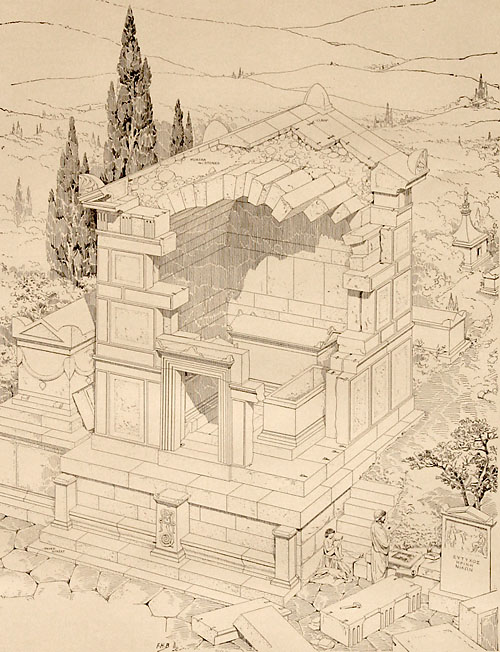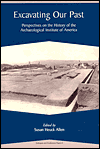May 1, 2002
by Susan Heuck Allen

“Americans in the East”: Francis Henry Bacon, Joseph Thacher Clarke, and the AIA at Assos
In 1878 Charles Eliot Norton, eager for the United States to stake its claim to a major archaeological site in the Mediterranean, watched as European powers scrambled to plant their flags at ancient sites in Greece and Turkey. He needed reconnaissance to determine the most appropriate site for America’s first fieldwork in classical archaeology, yet there were no senior classical archaeologists in America to whom Norton might entrust such a critical venture. For this mission he ultimately decided to support two young architects, Joseph Thacher Clarke (1856-1920) and Francis Henry Bacon (1856-1940). Norton viewed Clarke as a worthy pioneer, for he had been educated in Munich, then a major training ground for Americans in search of advanced education in classical archaeology. That Clarke had studied architecture, not archaeology or classics, at the Munich Polytechnic made little difference since he had developed an interest in ancient Greek architecture through the inspiration of art professor Franz von Reber and gained firsthand experience of the architectural sculptures of the Temple of Aphaia on Aigina at the Glyptothek in Munich. In 1876 Clarke returned to Boston to practice architecture. With “elements of scholarliness in his make-up far in advance of his contemporaries . . . great things were predicted of him . . . in the way of learning and scholarship.” Norton was impressed by his “assurance and exhibition of erudition,” in large part the result of his German education, and he quickly made Clarke his protege.
Bacon had some field experience from helping his father survey the Boston-Maine Railroad Extension in his late teens, and also had studied architecture at the Institute of Technology (MIT) with William Robert Ware, vice president of the Boston Society of Architects where Clarke was a junior member. By 1877, at age 21, Bacon was working as a draftsman in New York, “moonlighting” for McKim, Mead, and Bigelow. Ware described him as a gentleman of “fine taste and generosity of appreciation,” and probably introduced him to both Clarke and Norton. The young men’s talents were complementary: Bacon was an impeccable draftsman and experienced field surveyor, while Clarke exuded confidence and had a synthetic mind and scholarly ambitions. Both sought adventure, though neither had much money.
 | This article first appeared in Excavating Our Past: Perspectives on the History of the AIA,edited by Susan Heuck Allen, which is available through the David Brown Book Company in North America (800-791-9354) or Oxbow Books outside North America (+44 1865 241249), www.oxbowbooks.com. |